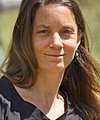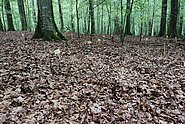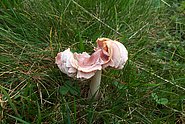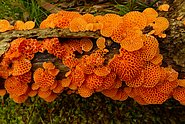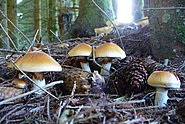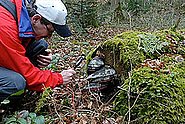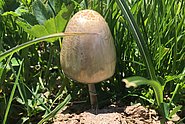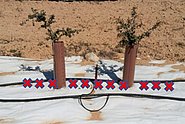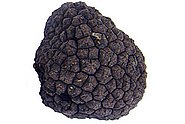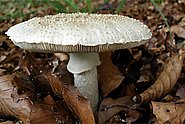Fungi perform important functions in the forest. We study the interaction between fungi and trees, and examine which factors affect fungal growth. In the SwissFungi data centre, we gather information on the distribution of fungus species that exist in Switzerland and provide the basis for their protection.
Contents ¶
Fungi decompose dead organic matter like wood, leaves and needle litter, and thereby keep the nutrient cycle going. In the root zone, as mycorrhizal fungi they help almost all higher plants to absorb water and nutrients, even our forest trees.
We investigate the diversity of mycorrhizal fungi in forest ecosystems and their role in the forests’ stability and regeneration capacity. We try to understand how mycorrhizal fungi adapt to changing environmental conditions, such as increased drought, and how environmental changes affect their composition and function.
Our research also focuses on the fruit bodies of these fungi as an important non-timber forest resource. For the Burgundy truffle in particular, we are using a long-term monitoring approach to investigate how ecological and climatic factors influence the productivity of this precious truffle species. Using genetic methods, we study their life cycle and dispersal.
Some fungi can cause plant diseases. Forest Protection Switzerland (WSS) diagnoses the causes of forest damage, provides information on current events and advises those affected on forest protection issues.
Which fungus grows where? ¶
In the national data and information centre SwissFungi, we compile collection data and environmental data on the species of fungus that exist in Switzerland, and thereby document spatial and temporal changes in their populations. SwissFungi provides the basis for implementing conservation measures for fungus. We advise the federal government, cantonal authorities and the public on how fungi can be nurtured, produce species protection pamphlets and publish the Red List of Macrofungi together with the Federal Office for the Environment (FOEN).
Contact ¶
Publications ¶
Treindl A., Brännhage J., Schlegel M., Vlcek P., Zengerer V., Blaser S., Gross A. (2022) Erstes Jahr eines Grossprojekts für den Schweizer Pilzschutz. Ein Rück- und Ausblick zur Feldkampagne für die neue Rote Liste der Grosspilze. Schweiz. Z. Pilzkd. 100(1), 24-26. Institutional Repository DORA
Peter M., Treindl A. (2022) Mykorrhizapilze - die geheimen Helfer im Wald. Bündnerwald. 75(6), 40-46. Institutional Repository DORA
Steidinger B.S., Büntgen U., Stobbe U., Tegel W., Sproll L., Haeni M., … Peter M. (2022) The fall of the summer truffle: recurring hot, dry summers result in declining fruitbody production of Tuber aestivum in Central Europe. Glob. Chang. Biol. 28(24), 7376-7390. https://doi.org/10.1111/gcb.16424 Institutional Repository DORA
Staubli F., Imola L., Dauphin B., Molinier V., Pfister S., Piñuela Y., … Peter M. (2022) Hidden fairy rings and males - genetic patterns of natural Burgundy truffle (Tuber aestivum Vittad.) populations reveal new insights into its life cycle. Environ. Microbiol. 24(12), 6376-6391. https://doi.org/10.1111/1462-2920.16131 Institutional Repository DORA
Senn-Irlet B., Blaser S., Dougoud R., Stöckli E., Gross A., Mürner R. (2021) Ascomyceten der Schweiz – seltene und wenig dokumentierte Arten. Cryptogamica Helvetica: Vol. 23. Bern: Bryolich. 431 p. Institutional Repository DORA
Brännhage J., Gross A. (2020) Eichenmehltau. Erysiphe alphitoides (Griffon & Maubl.) U. Braun & S. Takam. (Familie: Erysiphaceae). Erysiphe hypophylla (Nevod.) U. Braun & Cunningt. (Familie: Erysiphaceae). Erysiphe quercicola S. Takam. & U. Braun (Familie: Erysiphaceae). Factsheet Neomyceten. Birmensdorf: Eidg. Forschungsanstalt für Wald, Schnee und Landschaft WSL. 4 p. Institutional Repository DORA
Brännhage J., Gross A. (2020) Tintenfischpilz. Clathrus archeri (Berk.) Dring (Familie: Phallaceae, Stinkmorchelverwandte). Roter Gitterling. Clathrus ruber Micheli ex Pers. (Familie: Phallaceae, Stinkmorchelverwandte). Factsheet Neomyceten. Birmensdorf: Eidg. Forschungsanstalt für Wald, Schnee und Landschaft WSL. 3 p. Institutional Repository DORA


